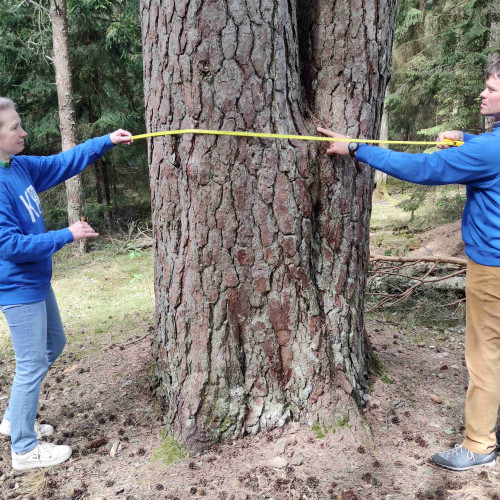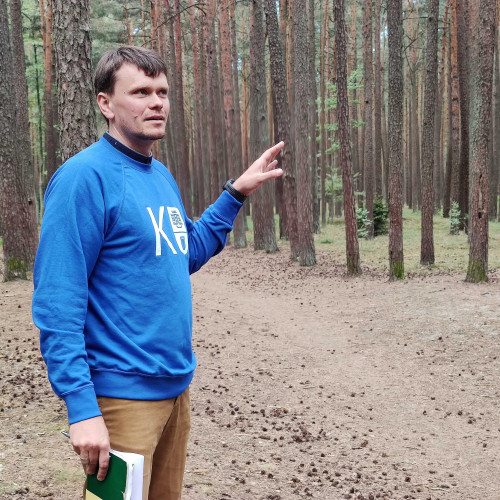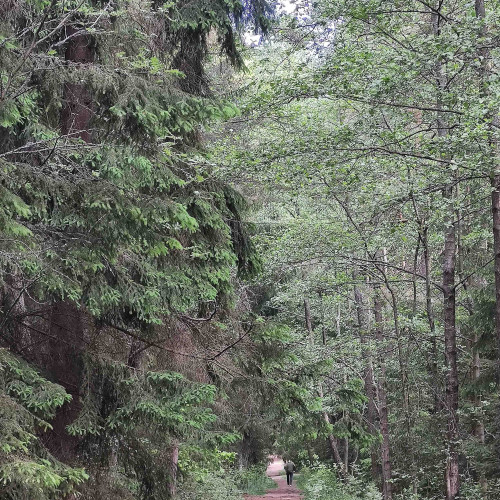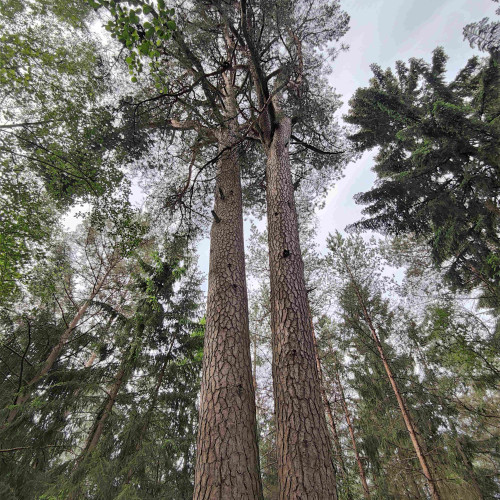The study was commissioned by Klaipėda City Municipality Administration. The researchers' task was to identify natural values and to determine the boundaries of the preliminary areas to be protected in Klaipėda, Melnragė, and Giruliai Forests of Klaipėda Forestry. The reason for the careful, multi-sectional revision of the 1,118 ha forest area was the public concern about individual logging operations related to the activities of economic entities (e.g. railways) operating in the area as well as the plans for the development of infrastructure objects. "A similar study was carried out in this area in 2012, when habitats of European importance in this forest were inventoried. At that time, the researchers identified only two categories: tree-covered coastal dunes and swamp forests. A decade later, the landscape changed: we see a greater diversity of habitats, while habitats of European importance for conservation make up about one third of the forest area (291 ha). Such a high coverage is typical only for reserves or some other protected areas in Lithuania," said Dr Robertas Staponkus, the biologist who led the study.
Together with colleagues from the Marine Research Institute at KU, he invited the media representatives of Klaipėda to visit a newly recorded forest habitat, Western taiga. According to the European Community environmental regulations, these are natural old coniferous and mixed forests. Lithuania has no shortage of forests of this type, however, they have been affected by silviculture. Areas with numerous features of natural forest are identified as habitats of EC importance.
"This is a different forest. If you travel merely 20 km away from the sea, you will not find this kind of forest. We have sand, wetlands, and even taiga in one area. Another habitat is forming near the Summer Concert Stage: the dry oak woods. If we selectively cut down pine trees that have reached maturity and leave only oak trees, we could create a habitat that is extremely rare in the seaside region," said dr Staponkus about the discoveries in the forests in the vicinity of Klaipėda.
"The forests in the northern part of the city are undoubtedly Klaipėda's greatest asset, inherited from the old inhabitants of Klaipėda. History shows that by planting forests, by carefully tending and protecting them, they saved the city from being covered up with sand, and the harbour entrance and the coasts from being sanded up and eroded. Today, the forest that has developed over the centuries is an oasis of clean air and a place of recreation for us, the people of Klaipėda, which we need to protect and care for", said dr. habil. prof. Sergei Olenin, one of the initiators of this study.
The conclusions of the study, submitted to Klaipėda City Municipality, recommend that the priorities for the protection and use of Giruliai Forest should be clarified in planning documents. One of the solutions of the general plan, which would strengthen the protection of the natural landscape, could be the decision to establish a municipal landscape reserve here. This would allow the conservation of rare and endangered species of wild plants, fungi, and animals and their communities or habitats. Scientific recommendations have also been formulated on the maintenance of identified forest habitats and on forest management activities in protected areas. The need for monitoring and eradication of invasive and alien species has been emphasised.
More about habitats
- A habitat is a place where a plant or animal normally grows and lives.
- Many species need forests to live and survive, moreover, some species need certain conditions to survive: sufficient moisture, decaying trees, certain soils etc.
- Habitats can vary in size: they can cover large areas of forest or be a single tree.
- There are a total of 14 natural forest habitat types in Lithuanian forests.
Historical excursus: why are Klaipėda-Melnragė and Giruliai forests important for the city?
- Historical sources prove that the forest in the northern part of Klaipėda was planted by man for several purposes: to prevent the threat of sandy desertification to the city's arable fields and to stabilise the entrance to Klaipėda harbour strait by protecting it from sand deposits.
- The first ordinance prohibiting the felling of green trees dates back to the 17th century; the inhabitants were threatened with punishments for disobedience.
- In 1835, reforestation was taken care of by Klaipėda Merchants' Union, and new plantations were protected by ordinances.
- In 1835, people were forbidden to walk on the fortified dunes, to pick plants, and to cut down the plantations (Klaipėda Regional Government News 1924).
- Forests and biodiversity were also protected later on, and Klaipėda Port Authority approved police ordinances: in 1905, an ordinance on the preservation of rare plants; in 1906, an ordinance on the protection of the coastal shore and the shores of the Curonian Bay; in 1924, after Klaipėda Region had been annexed to Lithuania, the old ordinances were repealed and a new ordinance was issued which prohibited walking on the dunes, except for roads, picking or otherwise damaging plants on the sea shores, trading in rare seaside plants, planting or cutting nurseries without permission, carrying out any excavation work without permission, transporting of earth or sand, and digging pits or ditches within 600 m from the seaside or the bay (Klaipėda Regional Government News 1924).
- In 1944-1945, Giruliai Forest was severely damaged by warfare. In order to preserve the coastal dunes and greenery, in 1960, Giruliai Botanical and Zoological Reserve was established on the territory of Giruliai Forest (613 ha), where the main protected values were the coastal forest communities and fauna.
On 24 September 1992, after the establishment of the Seaside Regional Park by Resolution No 1-2913 of the Supreme Council of the Republic of Lithuania, a part of Giruliai Botanical and Zoological Reserve was included in the Regional Park, while the rest of the territory became part of the recreational area of the city of Klaipėda.










